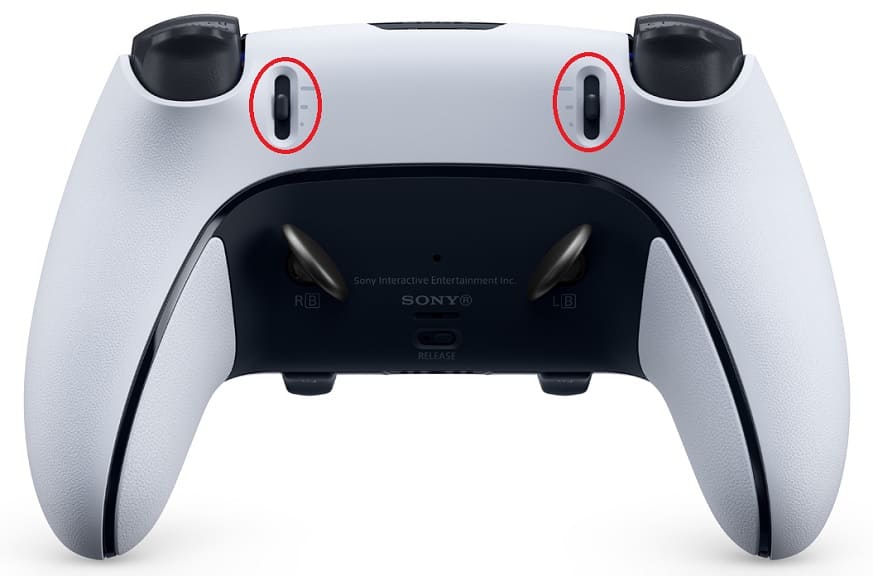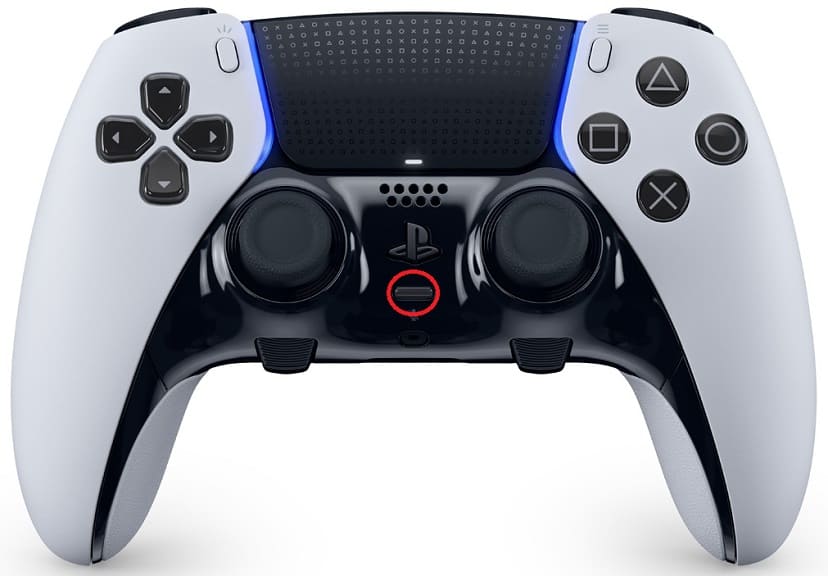Like the normal DualSense, the DualSense Edge features customizable trigger effects. If you can’t seem to change the intensity level, then you can take a look at this troubleshooting article from Seeking Tech to see what you can do.
1. It is very important to note that using the short or medium trigger stops on the DualSense Edge will completely disable the adaptive triggers. As a result, you won’t feel any resistance when pressing down the L2 and R2 buttons.
If you want to add resistance to these buttons, then you need to move the trigger stop sliders located on the back side of the all the way to the top-most option, which is the normal stop range.

2. If you leave the built-in microphone on the DualSense Edge turned on, then the trigger effect intensity will automatically set to Weak no what you do. This is probably done to conserve battery life as the Edge has a shorter one when compared to the normal version.
Therefore, you need to mute the built-in mic if you want a higher intensity level. In order to do so, you can simply press the small mute button located just below the PS button.

When the built-in microphone is muted, you should see the same mute button light up an orange light. You should also get an on-screen indicator as well.
3. Even if you change the DualSense Edge trigger effect intensity on a system level, the in-game settings will override it.
For example, if you have the intensity level set to Strong on your PS5’s system menus but turned off adaptive trigger support in a game, then you won’t feel any resistance when pressing the L2 and R2 buttons while playing that specific title.
Therefore, you should also check the in-game settings to see if there are any ways you can adjust the trigger effect.
4. If you still can’t adjust the adaptive trigger intensity of your DualSense Edge, then you can try resetting the controller.
5. You can also updating the controller to the latest available firmware as the trigger issues may be software related.
6. If none of the aforementioned steps have worked so far, then we suggest contacting the PlayStation Support team for additional support. There is a possibility that the controller may be defective.
